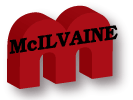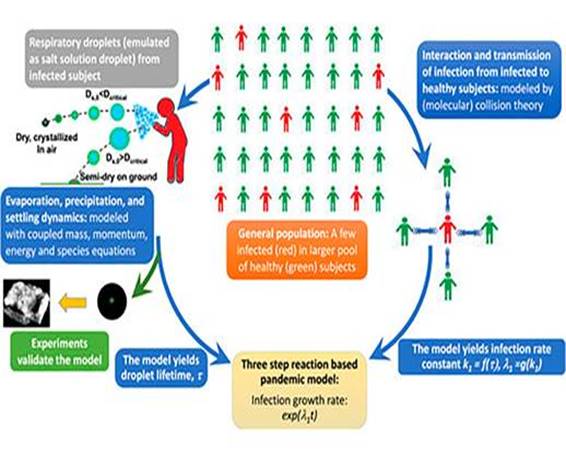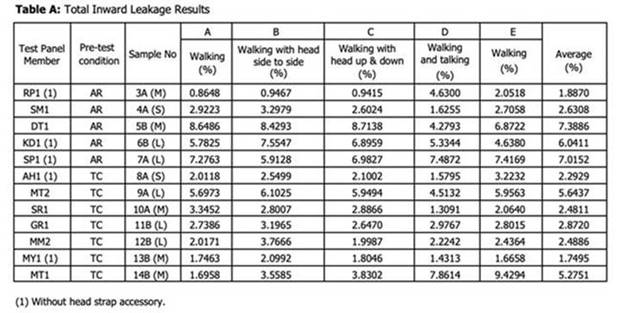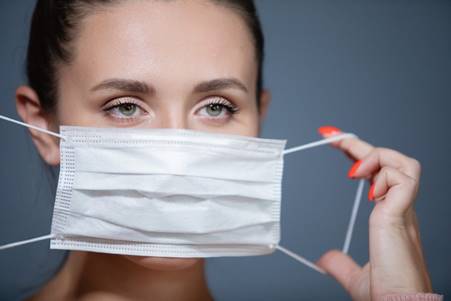
CATER Mask
Decisions
December 3 & 4, 2020
Urgent Need to Evaluate Face Mask Effectiveness
Saving Lives is a
Function of Face Mask Effectiveness
Particle Size is Important but not Completely
Quantifiable
A Tight Fit is Just as Important as Media Filter
Efficiency
Determining Mask Fit and the Amount of
Unfiltered Air
Standard Masks Result
in Twice the Leakage When Worn by Women
_____________________________________________________________________________
Urgent Need to Evaluate Face Mask Effectiveness
Over the next six months many thousands of lives
will be saved if people start wearing efficient
face masks. Efficient tight fitting masks
provide much better protection than loose
inefficient masks. The virus travels in small
aerosols. Even the small amount in large cough
droplets is only temporarily captured before
evaporation and turbulence cause it to again
become airborne.
The mask should be viewed as a sophisticated
medical device. It has to utilize filtration
media which can capture particles as small as
0.1 microns. It has to minimize leakage of air
around the periphery despite the fact that a
face is not a smooth surface. Furthermore there
is a big difference among face shapes and sizes.
Because the mask may be worn for long periods it
needs to be comfortable. It is also an article
of clothing so attractiveness matters.
Mask life is another factor. The mask can be
disposable or reusable. If it is reusable it
must remain viable through some number of
cleaning cycles.
The problem with disposable masks is that
meltblown media is in limited supply. If we are
to supply efficient masks for everyone it will
be necessary to extend the media life to many
days or even months.
There are reusable masks using nanofiber non
wovens as well as meltblowns.
The public needs masks which are Comfortable,
Attractive, Tight fitting, Efficient,
Reusable.
This forms the acronym CATER.
Due to all the complexities it is highly
desirable that all the information on CATER
masks be made available and analysed. The
McIlvaine Company has been doing this for all
mask types in Coronavirus Technology
Solutions.
However this is a paid service beyond the
price range of the individual. McIlvaine is
therefore offering a free option.
CATER Mask Decisions
has guidance, background documents and multiple
Alerts per week.
The goal is to provide individuals and
organizations with the information they need to
make the best mask decisions.
CATER Mask Decisions
provides the evidence which is needed by
associations and government bodies to provide
guidance to mask wearers. The Waterloo
Filtration Institute is one of the associations
which can evaluate this evidence and provide
guidance. McIlvaine has proposed to WFI that it
set up procedures whereby suppliers can submit
evidence about their masks and receive
evaluations.
Since WFI
members include many experts in media,
monitoring and other key areas, they will be
able to provide
evaluation systems which will be of
maximum value to decision makers.
McIlvaine recommends consideration of
evaluations which include media efficiency less
unfiltered leakage. The media efficiency will be
straight forward but there are many variables in
the unfiltered leakage including numbers of mask
sizes, face dimensions, and movement,. The
evaluation can reflect the amount of evidence
presented by the supplier. McIlvaine is
endeavoring to provide the
background
evidence such as is supplied in the balance of
this Alert.
Saving Lives is a Function of Face Mask
Effectiveness
It was originally thought that no COVID was
airborne. Then it was realized that some is
airborne but that this was small compared to the
virus in cough and sneeze droplets. Research
then showed that most virus is released in small
droplets as we talk and even breath. The latest
research shows that droplets temporarily
captured on mask surfaces can become smaller
droplets or evaporate and become a transmission
source.
This evolution in thinking has led to the
widespread mask mandates. However because the
virus will penetrate inefficient filters and
navigate around masks which are not tight
fitting some masks can be 10 times more
effective than others. A mask mandate which does
not include mask effectiveness is not
meaningful. It is therefore a matter of highest
importance to determine effectiveness of
different mask types and educate purchasers to
make the right choices.
Particle Size is Important but not Completely
Quantifiable
Mask filter media efficiency is a function of
the particle sizes to be removed. The first
problem is that viruses can be carried by small
particulates of various different shapes and
specific gravities.
Equipment to measure the efficiency of
removal versus particle size attempt to
normalize particle diameter for non-spheres and
assume that all the
particles have the same specific gravity.
The industry uses a device called a cascade
impactor to measure the weight fraction by
particle size. Particles which impinge at
increasing velocities define the size
segmentation. Particle counters use various
means to count the number of particles in
various size ranges. In all cases they are
reduced to spherical equivalents.
Two filters may provide equally high removal
efficiency on 0.3 particles. In the case below
one has much higher efficiency on 0.1 micron
particles but lower efficiency on 0.5 micron
particles.

Since the virus may be attached to 0.05 micron
particles, to 0.3 micron particles or in 1
micron droplets there will be differences in
virus removal which are difficult to determine.
All of this equipment is designed to determine
the temporary capture of particles. It does not
take into account the capture of droplets which
then evaporate or split allowing droplets or
salts to penetrate the media.

It would be nice if there were a testing device
similar to what McIlvaine developed for
particulate capture in scrubbers. The McIlvaine
Mini Scrubber is a 1 cfm device which measures
particle emissions with various scrubber energy
inputs. However, no direct reading device such
as this is available for virus capture
measurement.
The conclusions from this analysis are
·
Claims of virus removal efficiency have to be
only approximate
·
Any efficiency requirements in regulations
should not be adopted for other than the
intended purpose without analysis
A Tight Fit is Just as Important as Media Filter
Efficiency
Because the virus travels through the air as
would perfume or cigarette smoke it will flow
around mask filter media and through any
openings. Therefore the mask fit is very
important. The amount of virus in the unfiltered
air will be directly proportional to the
percentage of total air. Here two examples of
masks.
|
Mask |
Efficiency % |
Unfiltered % |
Net Efficiency |
|
Tight /Efficient |
93 |
-4 |
89 |
|
Loose/Inefficient |
60 |
-40 |
36 |
Because the loose inefficient mask allows 40% of
the air to escape unfiltered the media only
removes 60% of the remaining 60% resulting in a
net efficiency of only 36%
Some masks have net efficiencies as low as 10%.
This means that there is at least a nine fold
difference in effectiveness between masks. The
more efficient cloth masks are generally ones
with higher resistance which means that more air
is likely to leak around the mask. It is
therefore critical to determine the amount of
unfiltered or leaked air.
Determining Mask Fit and the Amount of
Unfiltered Air
There has been very extensive testing of filter
media. Fit testing for medical N 95 masks has
been refined and is reliable. Both qualitative
and quantitative tests are being used.
A few companies offering
masks to the public have done fit
testing. It is very time consuming and
expensive. There are four variables
·
mask design
·
number of different sizes available
·
individual face shapes
·
activities while using the mask
One company has five different mask sizes and
has conducted fit testing through BSI Group
(British Standards)
Alert November 5 - Surgical Mask Leakage Often
Exceeds 25%
Surgical mask material is fairly good for
trapping viruses, but surgical masks as normally
worn by themselves are not very effective at
protecting you because they are not sealed. The
main reason surgical masks fail to protect
people is air leakage around the mask, whereby
viruses can just
easily go around the mask and into your nose and
mouth. The amount of air going around a mask is
known as "total inward leakage (TIL)" in
scientific research.
For example, a study of manikins wearing face
masks showed that typical total inward leakage
often exceeded 25%.
Alert November 16 -
University of Tokyo; Net Efficiency: Cloth 17%,
Surgical 47%, N95 79%
Researchers in Japan say they have confirmed
that face masks are effective in both retarding
the spread of viruses and reducing the intake of
them. They used actual coronaviruses and
mannequins to reach that conclusion.
The finding was made by a group led by Professor
Kawaoka Yoshihiro and Project Assistant
Professor Ueki Hiroshi at the University of
Tokyo's Institute of Medical Science.
In their experiments, they placed two mannequins
face-to-face in a laboratory. One was designed
to discharge airborne droplets containing the
coronaviruses. The other had a mechanism
enabling it to take in air, imitating human
breathing.
In one experiment, the researchers put a mask on
the inhaling mannequin. They say the amount of
viruses it absorbed was cut by 17 percent with a
cloth mask and by 47 percent with an ordinary
surgical mask. When they put an N95 medical mask
on the mannequin so it fitted snugly, the amount
declined by 79 percent.
Alert October 15 - University of Chicago -Vogmask
95%, Respro and Totobobo 85%
The 3M masks consistently performed the best in
these tests. The Vogmask performed fairly well,
capturing 95% of pollutants. Big-name masks like
the Respro and Totobobo masks both captured less
than 85% of pollutants.
It’s important to make clear: masks that fit my
face well might not fit other people’s faces
well. However, there is evidence from a broader
population that masks fit most people well. A
scientific study of 3M models on 22 Chinese
people found a median fit score of
99.5%–essentially the same as the top results
from Dr. Saint Cyr and me.
Alert July 28 - 66%
Leakage with Chinese Masks
Chinese masks which showed that even if the
efficiency rating was high, the leakage during
normal activity could be 66%. Researchers first
tested each mask’s filtration efficiency by
drawing airborne diesel exhaust through a
section of the material for 30 minutes and
measuring the particulate matter and black
carbon concentrations on both sides. They also
tested four masks on 10 volunteers who were
exposed to diesel exhaust in a lab while
performing tasks such as talking, sitting,
standing, bending over and walking in place.
In
the filtration tests, the average particle and
carbon penetration ranged from 0.26 percent to
29 percent, depending on the mask material. In
the volunteers, the average leakage around mask
edges ranged from 3 percent to 68 percent during
sedentary tasks and 7 percent to 66 percent in
active tasks. Only one mask had an average
leakage below 10 percent in both active and
sedentary tests.
Alert August 14 -
With Leaks, Droplets Temporarily Captured are
Later Transmitted
One of the subjects for discussion will be the
measurement of one stop mask efficiency vs
direct flight. An airline passenger can fly from
Seattle to Atlanta where he infects the
recipient. Without a mask the Atlanta recipient
receives the full virus load. But most Seattle
to Atlanta flights stop in Denver. So in this
example with the mask being Denver the full
virus load lands in this hub. But what happens
to it subsequently?

As the millions of deposited viruses start to
evaporate or catch the flight from the hub some
will end up in Atlanta but others will end up in
Chicago and Dallas. In all likelihood an
inefficient mask acts as a hub and distributes
all the virus passengers in a cough in many
different directions.
The original guidance of CDC that masks should
be used primarily to catch the large cough and
sneeze droplets is based on the assumption that
it takes millions of viral particles to infect
someone. Furthermore it was originally presumed
that viruses will not be airborne and if they
are they die quickly. All of these assumptions
have been proven to be inaccurate.
With the one stop or hub and spoke flight
pattern you more than likely have only thousands
or hundreds of virus particles reaching Kansas
City or Albuquerque.
However, if every infected cougher is wearing a
cloth mask there will be many transmitters
generating hundreds or thousands of viral
particles. The recipient may be receiving the
millions of virus particles over time from many
different transmitters.
Some studies in hospitals address the cumulative
effect and conclude that it is significant.
Others establish the long distance travel and
survival of viruses. Other studies show that
some viruses become dormant but are revived by
the moisture in the lungs. This deep penetration
can lead to more serious infection than larger
virus droplets in the nasal passages.
Another way to analyze the problem would be the
example of an infected healthcare worker and an
elderly non infected patient. The worker is with
the patient for an hour and coughs into a mask.
Over the hour the patient may receive as many
virus particles from the worker as he would have
received in the initial cough if the health care
worker had been mask less.
Alert November 25 - Vogmask Shows Inward Leakage
of 2-8% with a Variety of Movements
Fit testing for the public requires a different
system than for healthcare workers. For someone
in a hospital setting there are both qualitative
and quantitative fit testing methods. But they
require tests of individuals.
For masks used by the public the best approach
is to use a panel of people of different sizes,
provide appropriate masks for each and then test
leakage under various conditions. One company
has invested heavily in this approach.
Vogmask has Quantitatively Fit Tested human
subjects to ensure the filtering efficiency is
retained over a series of motions like walking,
head movements, bending over, talking, etc. Here
is a sample of the fit testing on Test Subjects.

The determination of a leakage rating is
therefore more subjective and requires a
different validation approach. An expert
reviewing the Vogmask data would have confidence
that the leakage range is within the 1-8%
range. It is therefore recommended that a
validation group be formed to provide impartial
judgements on data submitted by mask makers
Alert December 3/4 - Face Seal Leakage
Documented for Surgical Masks
The efficiency and face seal leakage
characteristics of two half masks equipped with
particle filters or gas filters, and of two
surgical masks were studied by means of a test
head connected to a breathing machine.
Filtration and leakage were studied as a
function of particle size over a diameter range
of 0.3-10 micron with corn oil aerosol and an
optical particle counter. The filtration
efficiency of the filter materials was good,
over 95%, for particles above 5 micron in
diameter but great variation existed for smaller
particles. The face seal leakage was manifested
as decreased efficiency for large particles and
also for total mass, while the particles in the
micrometer range contained the major part of the
test aerosol mass. The particle number
efficiency diagrams obtained can be used both in
filter material studies and in leak detection of
valves or filter housings
https://pubmed.ncbi.nlm.nih.gov/4014006/
Standard Masks Result in Twice the Leakage When
Worn by Women

Computer modelling by researchers in the US
reveals that standard recommended face masks
have more leaks when used by women. Photo:
Shutterstock
Standard face masks recommended by US health
authorities are not a good fit for women – or
the elderly or thin people, according to a new
study.
Researchers led by Dr Kourosh Shoele at Florida
State University found that masks recommended by
the US Centres for Disease Control and
Prevention to stop the spread of
the coronavirus
fit people with masculine facial features very
well.
But “leakage” from the mask of the suggested
size and design doubled when used by women
because the protective equipment was too big.
This was also the case with thin or elderly
users.
“Different mask designs should be recommended
for different categories of people, especially
based on weight, age, and gender,” the team said
in a non-peer-reviewed paper posted on the
preprint site medRxiv.org
Shoele’s team also found that a mask’s fit over
the chin was a problem for people who were
underweight. For the same reason, the elderly
also had a greater gap than the young during
routine daily activities such as talking and
breathing, according to the computer simulation.
Women in the United States are already more
likely than men to wear a face mask, according
to a separate study.
They also do so with greater care. Across the
US, more 55 per cent of women wore masks as
recommended compared with 38 per cent of men,
researchers at New York University and Yale
University said in a paper published in the
journal Behavioural
Science and Policy.
